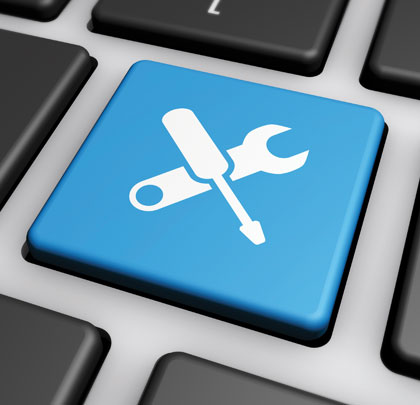Driving the service industry in 2018 will be an explosive growth in new technologies to gather and use data. The IoT (Internet of Things) in combination with digital twins, AI-powered service organizations, and equipping users to service their own assets are key trends impacting the service industry, predicts Mark Brewer, global industry director for service management at IFS.
By 2020, 25 percent of asset-intensive companies will adopt IoT and digital twins to optimize service. The IoT and so-called “digital twin” technologies are poised to have a huge impact on the service sector, reducing costs, maximizing data analytics, and extending the lifespan of products. Previously, when, for example, an elevator broke down, the customer would have to phone up a service engineer reactively. This approach is highly inefficient as the individual engineer may have little idea what is wrong with the equipment, leading to a low first-time-fix-rate and a disappointed customer.
With IoT sensors, the asset or machine becomes “smart” and is placed at the center, sending data back to the service center enabling diagnostics to determine issues that may arise in a day, week, or month’s time. It is no surprise that predictive maintenance is where the big benefits are first realized from IoT by asset-intensive companies wanting to optimize their service efforts. The Predictive Maintenance report forecasts a compound annual growth rate (CAGR) for predictive maintenance of 39 percent over the timeframe of 2016–2022, with annual technology spending reaching $10.96 billion by 2022.
Now, let us add in the concept of digital twins, which represents physical objects in the digital world. Previously, the manufacturer’s knowledge of a product stopped once it left the factory. But now, via the feedback made possible through IoT, you can start to learn the usage, behavior, and performance of these products in the real world and even make engineering changes to improve them over time.
This is a hugely important shift that helps complete the feedback loop, leading to smarter product design, more efficient service, and better performing products. You can even monitor customer usage patterns in order to modify or remove unpopular features over time.
The good news is that it can also be applied retrospectively to legacy products. Construction machine manufacturer Caterpillar has plenty of equipment that is 10–20 years old. But it has been able to fit them with smart sensors to measure tire pressure, temperature, oil levels, and so on. It is a win-win for customer and service organization alike, minimizing equipment downtime and enhancing product development and improving service efficiency. The approach is said to have saved Caterpillar millions of dollars already.
Alexa gets a job: AI-powered service calls to double in 2018. AI-powered voice assistants represent a second major opportunity for service organizations in 2018. Many calls into a service helpdesk are uncomplicated queries, like establishing opening hours, or determining when an engineer is due to arrive, which means they are simple enough to be answered by a bot. This drives significant potential for companies to connect AI-powered voice assistants behind the scenes to enterprise software with capabilities such as self-service diagnostics or scheduling optimization engines, to automatically offer appointment slots. This can both make businesses more effective and lighten the load for a stretched contact center agent workforce.
One company addressing this market is Amazon, who recently launched Alexa for Business to employ Alexa in organizations across the world. We can expect this to be a catalyst for the deployment of voice-activated service calls in the coming years. This AI-powered approach is going to get increasingly important, not just in terms of the quality of service you can deliver, but in the context of growing skills shortages in the industry. Looking further forward, not only will Alexa provide services to the end user, but think of how a voice-activated step-by-step maintenance procedure could be of tremendous value to a service engineer—“Alexa, what is the next step after removing the motor assembly?”
The latter is not to be underestimated. In the recent global IFS Digital Change Survey, surveying 150 decision makers in the service industry, “recruiting/training/retaining skilled technicians” was rated as the greatest inhibitor to growing service revenue, with more than a quarter (28 percent) of organizations claiming to feel either slightly or totally unprepared to deal with the skills deficit.
Designed by engineers, operated by you: Self-servicing growing by 50 percent by 2020. We are also going to start seeing a lot more augmented reality (AR) experiences used to put the customer in control of operating or servicing their own products. Just think of a Nespresso machine or a Dyson vacuum cleaner. Both companies have invested significant sums in helping consumers—with the aid of their smartphone and a QR code—to access visually overlaid, step-by-step instructions on usage and repair. The same kind of model could be applied to more complex systems within an industrial environment, including engines, boilers, or even an entire manufacturing line, providing detailed and highly customized plans for users to work from—without any of the superfluous information usually found in manuals. Which raises another benefit—AR experiences do not require language translation.
HOW TO GET THERE IN REALITY
There is clearly plenty of opportunity to drive a better customer experience, but for organizations to reap the benefits a few things need to happen. It is important not to think of vanguard technology as an end goal in itself. First up, make a value-based business case for any new approaches. That may mean wanting to increase first-time-fix-rates, offer new outcome based contract types, or simply reducing costs by ensuring engineers are only dispatched when strictly necessary.
Once you have established the business case you might need to break down traditional organizational siloes between engineering, design, and service. An AI-assistant or AR experience is only as good as the engineering data you are able to populate it with. It works two ways, though, as the feedback from product sensors will help R&D teams design and build better products going forward.
Ultimately, you need the people, processes, data, and systems all optimized to capitalize on these emerging approaches and reap the full benefits.
About the Author:
Mark Brewer is the global industry director for service management at IFS. For more information, visit www.ifsworld.com/us.
_________________________________________________________________________
Modern Contractor Solutions, February 2018
Did you enjoy this article?
Subscribe to the FREE Digital Edition of Modern Contractor Solutions magazine.




